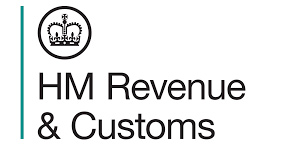HMRC SDLT: SDLT Surcharge for Non-Resident Property Transactions from April 2021
SDLT Increased Rates for Non-Resident Transactions
From 1 April 2021, non-resident transactions in the UK incur a 2% surcharge on the standard Stamp Duty Land Tax (SDLT) rates for residential properties. This surcharge applies to various rate categories, including standard residential rates, higher rates for additional dwellings, and first-time buyer rates, among others. The surcharge is determined by the non-resident status of the buyer, as defined under specific legal provisions.
- A 2% SDLT surcharge applies to non-resident property transactions from 1 April 2021.
- The surcharge affects standard residential rates and higher rates for additional dwellings.
- Non-resident status is determined by the test in Schedule 9A to FA03.
- First-time buyers are subject to the surcharge if the property price exceeds £500,000.
- Examples illustrate the surcharge application, such as Fifi’s £36,500 SDLT liability on a £700,000 property.
- Gia, a non-resident first-time buyer, incurs a £4,000 SDLT on a £200,000 property.
“`

Read the original guidance here:
HMRC SDLT: SDLT Surcharge for Non-Resident Property Transactions from April 2021
Increased Stamp Duty Land Tax (SDLT) Rates for Non-Resident Transactions
Since 1 April 2021, if a property transaction is considered a “non-resident transaction,” an additional surcharge of 2% has been added to the normal Stamp Duty Land Tax (SDLT) rates. This surcharge applies to each band of the relevant rates for residential properties as outlined in section 75ZA(1) of the Finance Act 2003 (FA03).
Key Rate Provisions
Section 75ZA(2) of FA03 specifies the provisions that determine the applicable rates:
- Standard Residential Rates: These are detailed in Table A, section 55(1B) of FA03.
- Higher Rates for Additional Dwellings: These rates are listed in Table A, paragraph 1(2) of Schedule 4ZA of FA03 (refer to SDLTM09730 and onwards).
- Higher Rates for Non-Natural Persons: This applies to certain acquisitions of residential property, specified in paragraph 3(1)(a) of Schedule 4A of FA03 (see SDLTM09500 and onwards).
- Lease Rates for Residential Properties: These are found in Table A, paragraph 2(3) of Schedule 5 of FA03 (refer to SDLTM13070 and onwards).
- First-Time Buyers: This provision is in Table A, paragraph 4 of Schedule 6ZA of FA03 (see SDLTM29800).
- Collective Rights Exercised by Tenants: This is outlined in section 74(1A) of FA03 (refer to SDLTM28500 and onwards).
Examples of SDLT Calculations
Let’s look at two examples to illustrate how the SDLT surcharge for non-resident transactions works:
Example 1: Fifi’s Property Purchase
Fifi buys a freehold residential property in England on 26 October 2022 for £700,000. Here are the important points:
- Fifi does not own another property, so the additional dwellings higher rates do not apply.
- As a first-time buyer, she might usually benefit from lower rates; however, because the price exceeds £500,000, the first-time buyer relief cannot be used.
- According to the residence test described in paragraph 4 of Schedule 9A of FA03, Fifi is considered non-UK resident, which means the 2% surcharge applies. More details are available in SDLTM09880.
Now let’s calculate Fifi’s SDLT liability:
- On the first £250,000, the charge is 2%: 2% of £250,000 = £5,000.
- From £250,001 to £700,000, the charge is 7%: 7% of £450,000 = £31,500.
Fifi’s total SDLT liability is: £5,000 + £31,500 = £36,500.
Example 2: Gia’s Property Purchase
Gia buys a freehold residential property in Northern Ireland on 7 August 2023 for £200,000. Consider the following:
- Gia qualifies for first-time buyer relief.
- According to the same residence test referenced previously, she is also classified as non-UK resident, so the surcharge is applicable. See SDLTM09880 for more information.
Let’s calculate Gia’s SDLT liability as follows:
- On her full purchase price of £200,000, the charge is 2% of £200,000 = £4,000.
As she qualifies for the first-time buyers’ relief, it is important to note that the surcharge still applies for non-resident transactions. Therefore, Gia’s total SDLT liability is: £4,000.
Understanding Non-Resident Transactions
A non-resident transaction refers to situations where an individual or entity purchasing a property does not meet the residency criteria set by the UK government. The criteria for residency are defined in the legislation to ensure fair taxation based on the residence of the buyer.
Those subject to the 2% surcharge could be:
- Individuals who live outside the UK and are buying a property.
- Foreign companies purchasing real estate in the UK.
Residence Test
The residence test helps determine whether someone qualifies as a resident or non-resident for SDLT purposes. The specific test is outlined in paragraph 4 of Schedule 9A to FA03. It considers various factors such as:
- The number of days spent in the UK during a specific tax year.
- Previous residency status.
Meeting certain conditions within these criteria is essential in identifying whether the buyer should be treated as a resident for SDLT calculation or as a non-resident, potentially subjecting them to the 2% surcharge.
Additional Considerations
When evaluating transactions and the applicable SDLT, it’s vital to keep the following considerations in mind:
- If a property is bought jointly with a partner who is a resident, this may affect the overall SDLT liability. It is advisable to understand how the surcharge may impact the overall transaction.
- Different rates apply to various types of property transactions, such as commercial properties, which may not be subject to the same residential rates or surcharges.
- Non-UK residents should also be aware of the broader tax implications, which may include liability for capital gains tax on any property sale in the future.
It is highly recommended for anyone considering a property purchase in the UK, particularly non-residents, to seek expert advice on their specific situation to ensure they understand all rates and potential surcharges involved in their property transactions.







